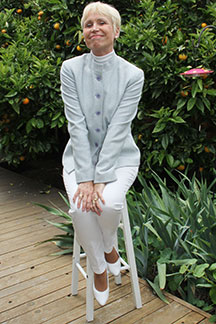Not only capitalist societies spawn profiteers. During the Cold War, Wolfgang Vogel, largely unknown to the general public but known to many prominent figures, pulled strings in Moscow as effectively as in Washington. For three decades, he was an extremely successful communist profiteer. http://www.nytimes.com/2008/08/23/world/europe/23vogel.html?_r=0
Licensed to practice law in both East and West Berlin, Vogel was the “point man” between East and West Germany. He was central to the exchanges of more than 150 spies from 23 countries and the last hope for many emigrants from East Germany. He earned millions in the process.

Wolfgang Vogel was central to the exchanges of more than 150 spies from 23 countries, photo www.dw.com
The life of Wolfgang Vogel
Born in 1925 in Lower Silesia (now Poland), Wolfgang Vogel studied law in Jena and Leipzig and passed the equivalent of the bar exam in 1949. In 1954, he began practicing law in East Berlin. Three years later, he gained the right to practice in West Berlin as well. The East German Ministry for State Security, known as the Stasi, employed Vogel to make contacts among West German lawyers and politicians. These contacts eventually helped him broker exchanges of spies captured by the West for political prisoners held by the East. Vogel died in Bavaria in 2008.
Wolfgang Vogel’s famed spy swaps
Wolfgang Vogel brokered some of the most famous spy swaps between East and West. In 1962, he was instrumental to negotiating the exchange of both, the American U-2 spy plane pilot Francis Gary Powers and the American Ph.D. student Frederic L. Pryor for the Soviet KGB spy, Vilyam Genrikhovich Fisher (also known as Rudolf Abel). The exchange inspired the 2015 movie, “Bridge of Spies, starring Tom Hanks as James Donovan, Abel’s defense attorney, and Sebastian Koch as the East German attorney Wolfgang Vogel. For more information on the Glienicke Bridge, visit http://www.walled-in-berlin.com/j-elke-ertle/glienicker-bruecke-bridge-of-spies/
In 1981, Vogel negotiated the exchange of East German Stasi-agent Guenter Guillaume for Western agents captured by the Eastern bloc.
In 1986, Wolfgang Vogel brokered the exchange of Israeli human rights activist and author Anatoly Shcharansky for Czech sleeper-agent Karl Koecher and his wife.
Wolfgang Vogel – the profiteer
Representing the East German leader Erich Honecker, Wolfgang Vogel not only helped facilitate East-West prisoner exchanges, he also negotiated the re-location of thousands of East Germans to the West. However, his assistance did not come cheap. He became a wealthy man in the process.
Between the 1950s and 1989 (the fall of the Berlin Wall), Wolfgang Vogel was an official “representative of the German Democratic Republic for humanitarian issues.” In that capacity, he “sold” 33,755 political prisoners to West Germany. Their value varied according to their profession, their “crime” and how well they were known in the West. He also reunited 215,019 families and individuals in line with to the East German government’s maxim, “Human relief against hard Deutschmark”. http://www.sueddeutsche.de/politik/wolfgang-vogel-tot-der-anwalt-zwischen-den-welten-1.692361 The family reunion-seekers were individuals who had been left behind when the Berlin Wall was erected in August 1961, or they were relatives of escapees or relatives of those who had defected on business trips to the West. When these individuals turned to Vogel to obtain permission to emigrate, he was often able to negotiate the necessary permissions, provided these family reunion-seekers had private property to sell. Only then would Vogel locate buyers – for a fee, of course.
For his efforts, Wolfgang Vogel received benefits in cash and in kind. These benefits amounted to the equivalent of more than a half billion euros. http://www.welt.de/geschichte/article130633378/Darf-man-einen-Menschenhaendler-heiligsprechen.html At times, he earned half a million Deutschmark and more in just one year, practically tax-free. Still, Wolfgang Vogel saw himself as a humanitarian and a lawyer of the people. He said, “My ways were not white and not black; they had to be gray.”
For a sneak peek at the first 20+ pages of my memoir, Walled-In: A West Berlin Girl’s Journey to Freedom, click “Download a free excerpt” on my home page and feel free to follow my blog about anything German: historic and current events, people, places and food.
Walled-In is my story of growing up in Berlin during the Cold War. Juxtaposing the events that engulfed Berlin during the Berlin Blockade, the Berlin Airlift, the Berlin Wall and Kennedy’s Berlin visit with the struggle against my equally insurmountable parental walls, Walled-In is about freedom vs. conformity, conflict vs. harmony, domination vs. submission, loyalty vs. betrayal.








